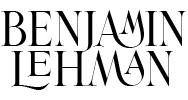 People love to shoot at sunrise and sunset, and why not? It’s a beautiful time of the day where the sun is doing all of the hard work for you. That low horizon light is flattering in almost all cases and will often remove the need for external flashes completely.
People love to shoot at sunrise and sunset, and why not? It’s a beautiful time of the day where the sun is doing all of the hard work for you. That low horizon light is flattering in almost all cases and will often remove the need for external flashes completely.
There are times, however, when you can’t escape the mid-day sun, and that harsh, overhead light, can be anything but flattering to your subjects. This was the case when I was recently asked to take a series of portraits for the Akron/Canton Regional Food Bank. The job was to take photos of the clients and volunteers of the food bank, and because the area food banks often hand food out in the late mornings I was constantly faced with shooting with the noon-day sun in the sky. In cases such as this, it’s strongly recommended that you use some sort of a fill light, and if you do it right your photo will be beautifully exposed with your background and subjects left looking amazing.
The way I approach this problem is fairly simple. The sun will almost always be at some sort of angle to you, even in the middle of summer at high noon. The trick is to find that small difference in angle and then put your subject’s backs to it. In this way, you are using the sun as sort of a huge, nuclear rim light. You’re also keeping the sun out of their eyes, which helps reduce squinting.
The next trick is exposure. Since your using an external light source to expose your subject correctly, you need to set your camera to expose for the background. Here I like to use the magic -1 to -2 ev trick. Darkening the background in this way will both saturate the colors of the background and make your subjects pop.
All that’s left now is positioning and dialing in your light’s power. This part is where you can get creative, but generally I like to use a fairly large light source (I use an umbrella/octobox similar to this on location with my AlienBee’s 800) with it positioned directly in front of, or just to the side of my subjects. Light power is set to generally equal neutral exposure on the subjects, although more or less power can be used to add drama.
